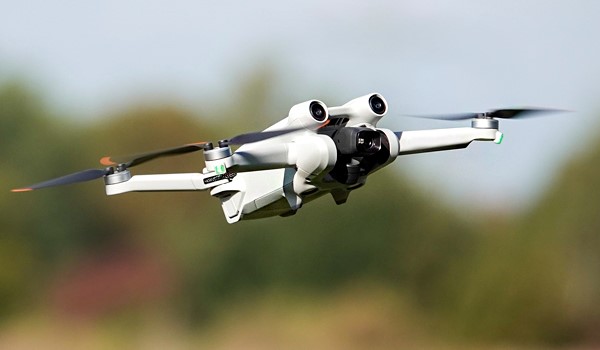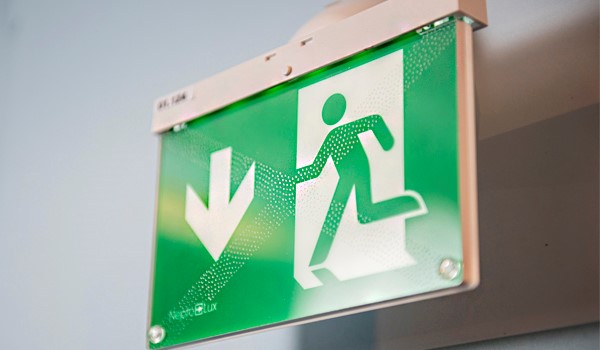According to Jan Herranen, Business Director of Hedengren Security, AI and data analytics enable security systems to be utilized for new commercial purposes. "AI-driven solutions can reduce human labour, optimize business operations, prevent risks, generate savings, and improve societal efficiency," says Herranen.
AI, as a major transformative force in society, is revolutionizing the security technology industry in two ways, according to Herranen.
"There are both new innovations and new cyber threats emerging as AI is misused for criminal purposes. The challenge is that legislation struggles to keep up with both developments," Herranen explains.
The Power of Data Grows
According to the Business Director, the second major force in the industry is the exponential growth of data. The open interfaces of security systems and their integration with smart applications that analyse data enhance security and enable data to be used for new commercial purposes as well.
"Property owners no longer invest in camera systems just to act as a deterrent or to provide video footage of possible incidents afterward. The greatest value of the investment lies in the business benefits of predictability."
According to Herranen, this means that with data analytics, in addition to protecting lives and property, human labour can be reduced, the best-selling products can be placed in the best locations, peak congestion can be smoothed out, or the usage of space, cleaning, logistics, and maintenance needs can be optimized.

"The benefits are based on noticing exceptions. AI can detect even the smallest changes in vast amounts of data and predict needs based on them."
Security Becomes Safety
Herranen highlights a smart solution, based on detecting anomalies, which has become common in hospitals to prevent patient falls. The system application anonymously monitors people's movements and sends alerts through the security system when a risk of falling or unwanted movement is detected.
“The solution, integrated into nurse call systems, also allows for video to be opened and for voice guidance from a nurse, meaning most situations can be resolved without the nurse's physical presence,” Herranen explains.

Rapidly spreading in Finnish hospitals, the solution reduces dangerous situations, saves nurses' time, and generates societal savings, according to Herranen.
“The system is an example of how security systems are evolving from traditional, preventative, and reactive security systems into proactive safety systems, which enhance societal efficiency and reduce unnecessary work and costs,” says Herranen.
Invisible Security
Although the demand for data is increasing, the number of physical systems in buildings is decreasing, and the size of devices is shrinking. According to Herranen, this means that more data-collecting sensors are being integrated into mandatory systems such as fire and emergency lighting systems. The same system can collect data on, for example, human or object movements, building humidity, fine particles, lighting, and CO2 levels.

Herranen sees a similar transformation in movement as with mobile phone usage. Soon, cameras will recognize building users, so they won't need to present identification or enter codes at doors. Movement will become more seamless in areas where people have access rights.
“This means that the boundary between traditional, reactive physical security and invisible, preventive cyber security is blurring,” Herranen says.
Passive Systems Become Active
Herranen sees new global threats creating a need for increasingly reactive security systems.
“New types of threats, such as gang crime, terrorism, school shootings, and large-scale fires and wildfires, create a need for guiding large masses of people in emergency situations. Systems are needed that can react adaptively to crises and problems, meaning they can change guidance direction as situations evolve.”

Herranen also predicts a rise in the popularity of voice control.
“Young people are already using Siri smoothly, and in the latest cars, adjustments can already be made with voice commands. It could be that soon, the navigation system will project the route view onto the windshield or sunglasses with voice control, so the driver won’t need to take their eyes off the road,” Herranen predicts.
AI also opens up new possibilities for system installation and maintenance.
“The expertise of the best engineers in the industry can be accessed instantly, even on the other side of the world, as installers can make adjustments with virtual guidance from an expert or AI,” Herranen says.
Responsibility Is Changing the Market
According to the Business Director, the downside of development is the growing concern about privacy.
“Product development is a constant balancing act between a ‘big brother is watching’ experience and new benefits. If you want to be a trusted player in the industry, every new system must be risk-free and comply strictly with legal requirements. If the wrong information leaks out, the entire business is at stake.”
Customers' increasing environmental responsibility requirements are also shaping the market.
“Customers are already favoring manufacturers who know their systems' carbon footprint. Customers have also become aware of how significantly the energy efficiency and lifespan of systems can affect total costs.”

Although industry players are developing their sustainability, legislative changes are slow. Herranen cites the example of building exit lights, which by law must be on 24/7.
“We have been pushing for a change so that the lights wouldn’t have to be on in buildings that smart systems detect as empty. The energy savings for the entire building stock in Finland would be significant,” Herranen says.
A Challenging Playground
According to Herranen, the industry’s development favors players who invest in responsible and agile product development and are close to their customers.
“Although responsible product development is challenging and domestic production is more expensive, the benefits quickly become a competitive advantage. Many customers value a reliable domestic player in today’s conflict-prone environment, and when production and services are close to the customer, logistics and production emissions are also lower.”

Herranen believes that in the future, comprehensive expertise will also become more important. Parties that have a broad understanding of the customer’s environment, the industry’s offerings, and future needs can help customers build manufacturer-independent system solutions and create industry-specific commercial innovations.
“The keywords in the industry’s development are openness, scalability, and reliability. Those who try to limit the benefits of integration to only their own customers or compromise on responsibility requirements will quickly drop out of the competition,” Herranen concludes.